62 Journalists Detained During Recent Protests In Iran: CPJ
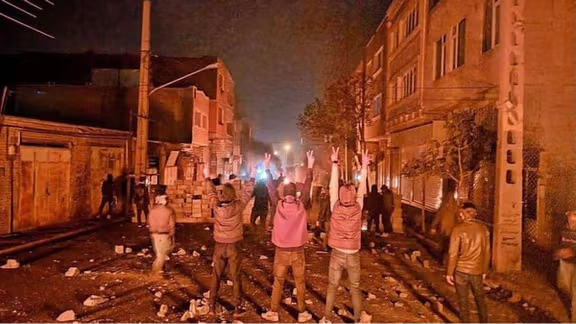
An American non-profit organization has announced the names of journalists apprehended by the Islamic Republic during the 2022 anti-government protests.

An American non-profit organization has announced the names of journalists apprehended by the Islamic Republic during the 2022 anti-government protests.
The Committee to Protect Journalists says the list is based on information obtained from CPJ’s sources inside Iran, media reports, and the Tehran Journalists Association.
The names of Niloofar Hamedi and Elaheh Mohammadi could also be seen in the list. They were arrested by the Iranian regime for reporting the death of Mahsa Amini who was killed in the custody of the hijab or ‘morality police’ in September.
CPJ named 62 journalists who were arrested in the past two months and 14 released, but the list will be regularly updated to record known arrests and releases, it said.
Last week, Reporters without Borders said since the start of the protests in reaction to Mahsa Amini's death on 16 September, at least 42 journalists were arrested throughout Iran.
It stated almost half of all newly arrested journalists are women, including two who are facing the death penalty. Reporters Without Borders urged the clerical rulers to immediately release the detained journalist.
Iran is reportedly the third largest jailer of journalists in the world, after China and Myanmar.
The Islamic Republic has long held one of the world’s worst press freedom rankings, at 178th out of 180 countries.
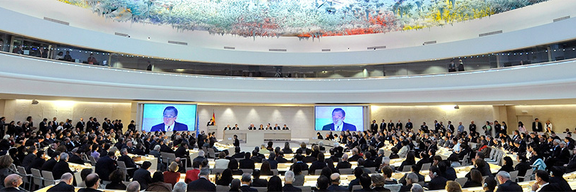
In a special session to address Iran’s worsening rights violations, the UN Human Rights Council is set to adopt a resolution aimed at holding the Islamic Republic accountable.
Although various United Nations bodies and experts have criticized Iran’s records for years, this would be the first dedicated deliberation and resolution against the behavior of the Islamic Republic.
The 35th special session of the Human Rights Council is set for Wednesday, November 24, following an official request submitted on November 11 by Germany and Iceland, which has been supported by 44 States thus far.
The resolution strongly deplores the reported deaths of at least 304 people, including 41 children, participating in the protests following the death of Mahsa (Jina) Amini in hijab police custody in September, as well as reported arbitrary arrests of thousands participating in the protests.
Urging the Islamic Republic to promote, protect and fulfill human rights, it calls on Tehran to take all necessary measures to prevent extrajudicial killings, enforced disappearances, sexual and gender-based violence, arbitrary arrests, detentions, torture and other cruel, inhuman or degrading treatment or punishment.
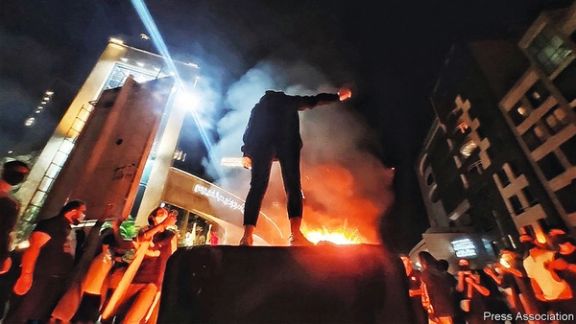
According to the draft resolution, the HRC "decides to establish an independent international fact-finding mission to thoroughly investigate, engage with stakeholders and collect evidence of alleged human rights violations." It also urges Tehran “to grant unhindered access to the country without any delay and to provide the members of the fact-finding mission with all information necessary to allow for the proper fulfilment of their mandate.”
Tehran has denied entry to successive UN special rapporteurs on human rights for two decades and claims that such a mechanism has political basis and unnecessary.
Referring to the crackdown on protests, which has led to arrest of more than 15,000 people, the resolution stressed the need “for accountability for human rights violations, which is critical for the prevention of further violations.”
It also recalls the Islamic Republic’s “obligation to ensure prompt, effective, independent, transparent and impartial investigations into all reported human rights violations.”
Reaffirming the human rights of women and girls in Iran, the resolution expresses deep concerns “about allegations of pervasive human rights violations in the Islamic Republic of Iran, including reports of women and girls being arbitrarily arrested and detained, beaten and sexually assaulted for exercising their human rights and fundamental freedoms.”
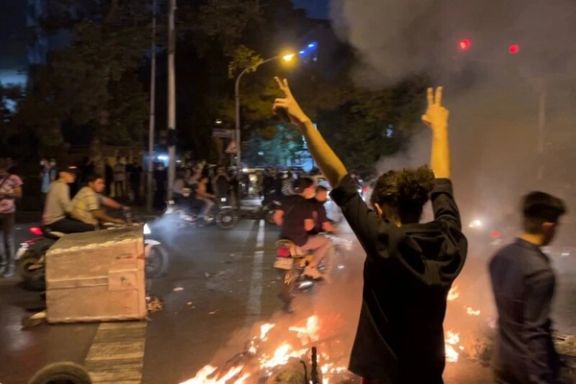
The resolution also touched on reports of the arbitrary arrest of minors for participating in protests, their incarceration at “psychological centers” and “preventative” detentions of civil society activists to restrict their ability to participate in or organize peaceful protests.
The UNHRC member states also voiced concerns about restrictions on communications affecting landline and mobile usage, including Internet shutdowns and blocking of social media platforms, which undermine the exercise of human rights, including the right to freedom of opinion and expression. They called on the authorities to fully restore Internet access, underlining the importance of maintaining free, open, interoperable, reliable and secure access to the Internet.
In another global move over Iran’s denial of women's rights and crackdown on protests, calls on the UN to expel the Islamic Republic from the UN Commission on the Status of Women are also getting stronger with Canada, New Zealand, Netherlands and the United States behind the push. UN Watch, an independent non-governmental human rights group based in Geneva, has drafted a resolution for the 54-nation UN Economic Social Council (ECOSOC) to remove Iran.
Protests on Tuesday, November 15 were the largest in a month and are set to continue this week as local media Wednesday reported the sentencing of a second detainee to death by regime courts.

The presence of Iran’s national football team in Qatar’s World Cup has sparked controversy as the country is convulsed with antigovernment protests and many people expect athletes to support the uprising.
The Iranian squad – nicknamed Team Melli – met with President Ebrahim Raisi hours before departing for Doha, irking many Iranians who did not expect the players to be so blithe about the current uprising across the country. They have been heavily criticized on Twitter since the meeting.

During the nationwide protests on Tuesday, people also set fire to a government banner of the national team.
During the past few days, Iranian legendary striker Ali Daei and outspoken star Ali Karimi, who has been charged in absentia for supporting the protests, said they rejected invitations by Qatar to watch the World Cup matches.
Declining the invitation, Ali Karimi told President Tamim bin Hamad Al Thani in a letter released on Tuesday that “As you know, the people of Iran are currently going through a very difficult time. The international media largely ignores our struggles. Right now, there are more important issues for me than Football and I want to be with my people and be their voice.”
During a press conference earlier on Tuesday, national team coach Carlos Queiroz claimed the players are free to join in the protests while they are playing at the World Cup in Qatar but must do so within the rules of the tournament.
“You express yourself in football according to those principles and values. Everybody has the right to express themselves,” he said.
Addressing a reporter who asked about the current situation in Iran, Queiroz said, “You guys are used to kneeling in the games and some people agree, some people don't agree with that, and in Iran it's exactly the same, but it is out of question to think that the Iran national team is suffering any sort of issues like that, the players only have one thing in mind, which is to fight for that dream to be in the second round.” The Iranian national team has failed in its five previous World Cup appearances to reach the second round.

Queiroz was asked whether he was proud to coach a country that repressed women. In a terse retort, the coach asked the reporter how much he would pay him to answer the question, before adding the reporter should think about the issue of immigration in the UK first.
The Iranian government is extremely worried about protests by fans or even players during the games and wants to make sure people will not see any manifestations on satellite TV. The state broadcaster can always cut away during live matches.
It is most probably for this reason that the Qatari government has denied accreditation to Iran International’s journalists from traveling there to cover the World Cup.
Although FIFA has issued ID cards for our correspondents, the Qatari interior ministry denied accreditation.
Last month, Iranian President Ebrahim Raisi expressed concern over possible problems that may happen during the FIFA World Cup, tacitly referring to people chanting slogans against the Islamic Republic during matches or players making statements about the situations in Iran. Earlier in November, he tasked the Foreign Ministry to contact Qatari officials regarding the issue to find ways “to predict and prevent possible problems."
Team Melli players covered up their national team badge when they played two warm-up internationals in September, which was interpreted as a sign of support for the protests, but other national teams and athletes have been more vocal and direct in their support for the protests.
In less than a month, the pace of the athletes showing support for the protests has accelerated as the Iranian football, beach football, waterpolo, basketball, and sitting volleyball teams refused to sing along with the anthem, which is customary in almost all international competitions. Now with the biggest sporting event on the horizon, the regime is resorting to whatever it can to stifle the voices of dissent. Authorities have made serious threats against athletes and other celebrities to stop them from public displays of solidarity with protesters but to no avail.
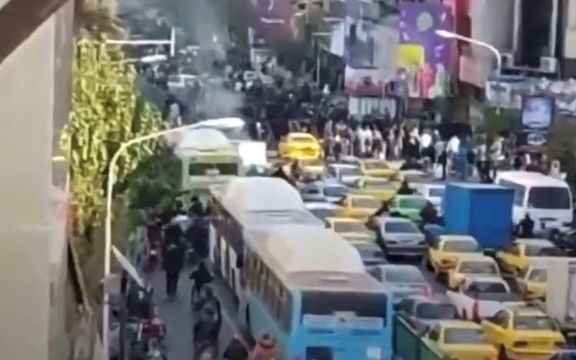
Protests on Tuesday in Iran began at around noon to mark the third anniversary of ‘Bloody November’ in 2019, when the government killed at least 1,500 protesters.
By early evening, protesters had come out at many locations in Tehran, blocking streets and putting large trash containers on fire. Similar scenes were reported from other cities.
The Tuesday protests were widespread and were the largest in the past one month. Still, we do not have a full picture of all gatherings and demonstrations across the country or number of any possible casualties. Two to three protester deaths have been reported but too soon to be certain.
Anonymous activists regularly issuing calls for demonstrations, announced a three-day period of protests starting Tuesday, November 15, the day when in 2019 security forces opened fire with military weapons on young Iranians who had come out to protest a sudden hike in gasoline prices.
In the next 3-4 days, the Revolutionary Guard, its Basij militia and police indiscriminately fired at people in the streets, even killing some bystanders. More than 10,000 were jailed without due process of law. Reuters at the time reported that Iran’s ruler Ali Khamenei had personally authorized security forces to use every means to put down the uprising.
The current protests that started in mid-September after Mahsa Amini, a young woman was killed in the custody of ‘morality police’, have lasted nearly two months, the longest and most serious challenge to the Islamic Republic, which has one of the largest trained and well-equipped suppression machines in the world.
An IRGC commander, Gholamreza Soleimani Tuesday announced the “Week of the Basij” and said 900,000 members of the paramilitary militia will participate in drills. This is an ominous sign of more potential bloodshed as protesters come out to mark the three-day anniversary.
So far, security forces have killed more than 340 protesters, according to human rights monitors and arrested an estimated 14,000 people. Government officials have widely threatened to execute many detainees, and a court in Tehran on Sunday sentenced the first protester to death, without a transparent trial and following due process of law.
By noon on Tuesday, people were demonstrating in Tehran’s bazaar as reports began to pour in about protests and strikes in other parts of the country. But larger protests are expected in the evening, as protesters prefer to gather in darkness.
Below, we will provided live coverage of events, by posting brief updates and videos. We divided content based on provinces to make it easier for you to follow. The most recent events are usually at the top of each heading.
The coverage ended at 01:18 Iran time on Wednesday, November 16.
-----------------------------------------------------------------------------------------------------------------------------
TEHRAN
Protesters have blocked a main street in west of Tehran to prevent security forces from using their vehicles.
At Tehran's Revolution square protesters set fire to a motorcycle belonging to special riot troops.
Security forces attack people in a Tehran metro station Tuesday.
Protests Tuesday evening in Saadat Abad district of Tehran.
Crowds begin to congregate in the early evening hours in Tehran. Here they are chanting "Khamenei will be out".
A large crowd chanting in Tehran, "This year is the year of blood Seyyed Ali will be gone", referring to Iran's 83-year-pld ruler Ali Khamenei.
Protesters blocking a street in Hassan Abad district of Tehran. A voice in the video says security forces are approaching.
Security agents placed inside Sina Hospital firing tear gas at protesters in the streets on Tuesday.
Protesters began to gather in the streets by midday. This is Sanaat square in Tehran.
Schoolgirls protesting in Tehran's Naziabad district after classes ended early Tuesday afternoon.
-----------------------------------------------------------------------------------------------------------------------------
UNIVERSITIES
Students at Chamraz University in Ahvaz, Khuzestan province chanting "Freedom, freedom".
Students at Kermanshah's Razi University, western Iran, protesting on Tuesday, chanting "This is the last message, Target is the whole regime."
Students in Khomeini-Shahr Universiaty, Esfahan Province.
Student protests also took place in Babol University, northern Iran.

Students at Tehran's Polytechnic University began a protest sit-in before noon on Tuesday but at 12:50 they were confronted by campus security that threatened them to end their gathering.

Students at the industrial university in Semnan chanting, "From Zahedan to Tehran, My life for Iran".
Students in a unique sort of protest in Sanandaj University.
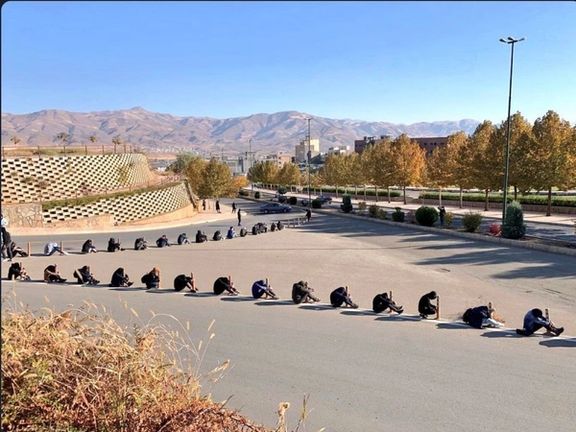
-----------------------------------------------------------------------------------------------------------------------------
KORDESTAN PROVINCE
According to reports by Hengaw human rights monitoring group two people were shot dead by security forces in the province on Tuesday, One citizen was killed in Sanandaj and another in Kamyaran. Reports say that protesters overran a Basij militia base in Kamyaran.
Protests in the town of Ghorveh in the restive province with a majority of Iranian Kurds.
All markets nd retail businesses on strike in the town of Bukan.
-----------------------------------------------------------------------------------------------------------------------------
CENTRAL PROVINCE
All small businesses are on strike in Arak, capital of Central Province.
-----------------------------------------------------------------------------------------------------------------------------
EAST AND WEST AZARBAIJAN PROVINCES
Protesters set fire to the municipal building in the town of Bukan, West Azarbaijan Province.
Protests in Orumiyeh or Urmia. The tweet says, Azaris, Kurds and Armenia hand in hand protest and chant, "This year is the year of blood, Seyyed Ali will be gone."
All retailers and the traditional bazaar on strike in Tabriz.
Reports and images also show extraordinary security measures in Ardebil, northern Iran and a large presence of security forces.
-----------------------------------------------------------------------------------------------------------------------------
KHUZESTAN PROVINCE
Protests in Ahvaz, capital of the oil-rich Khuzestan province.
As evening fell, protesters gathered in force in Izeh, a town in Khuzestan.
Retail stores on strike in Kazerun, a small city in the oil-0rich Khuzestan, where there were no protests so far.
-----------------------------------------------------------------------------------------------------------------------------
KERMANSHAH PROVINCE (Western Iran)
Fierce protests in the town of Kamyaran, where security forces are firing at protesters with automatic weapons.
-----------------------------------------------------------------------------------------------------------------------------
FARS PROVINCE
Evening protests in Shiraz, capital of Fars Province.
Security forces firing on protesters from inside a mosque in Marvadasht.
People gathering in smaller groups in neighborhoods and block streets in preparation for the evening. This video is from Shiraz.
The traditional Vakil Bazaar in Shiraz, capital of Fars Province on strike in solidarity with ongoing protests.
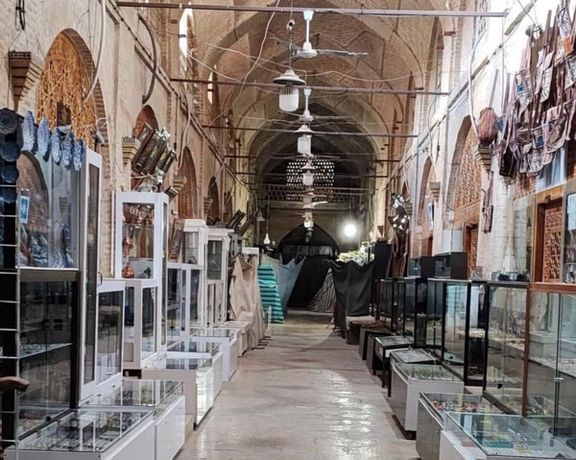
-----------------------------------------------------------------------------------------------------------------------------
NORTHERN KHORASAN PROVINCE
General strike in Bojnourd, the provincial capital on Tuesday.
-----------------------------------------------------------------------------------------------------------------------------
ESFAHAN (Isfahan) PROVINCE
Protesters set large fires in the streets in the historic city of Esfahan, capital of Esfahan province.
People chanting "Freedom, freedom" in Shahin Shahr a town near the provincial capital Esfahan.
-----------------------------------------------------------------------------------------------------------------------------
GILAN PROVINCE
Security forces walking and firing guns as they try to scare people in the steets of the city of Rasht.
-----------------------------------------------------------------------------------------------------------------------------
BUSHEHR PROVINCE
Retailers and stores on strike in Bandar Genaveh port city on the Persian Gulf, which is a small city and so far there were no reports of protests.
-----------------------------------------------------------------------------------------------------------------------------
Hamedan
Protesters in the western city of Hamedan out in force chant "Freedom, freedom".
-----------------------------------------------------------------------------------------------------------------------------
KHORASAN-RAZAVI PROVINCE
Mostly young protesters in the religious city of Mashhad marching in the streets and chanting, "This year is the year of blood, Seyyed Ali will be gone". Some women in the video are seen without hijab.
-----------------------------------------------------------------------------------------------------------------------------
SEMNAN PROVINCE
A general strike in Garmsar on Tuesday. Semnan has been one of the quietest provinces in Iran during the past two months.
-----------------------------------------------------------------------------------------------------------------------------
ZANJAN PROVINCE
Protesters in the provincial capital, Zanjan, chanting "We shall fight, we shall die, but take back Iran".
-----------------------------------------------------------------------------------------------------------------------------
MAZANDARAN PROVINCE
In the city of Babol gunshots are heard as people protest despite the deployment of security forces.
Protests in the city of Amol, where residents have been at the forefront of the movement since September. At one point more than 100 security forces attacked protesters with everything even in some instances firing at them. Young protesters tried to spread into small streets and regroup.
-----------------------------------------------------------------------------------------------------------------------------
QAZVIN PROVINCE
Protesters in Qazvin the provincial capital chanting, "This year is the year of blood, Seyyed Ali will be gone," referring to Iran's ruler Ali Khamenei.
-----------------------------------------------------------------------------------------------------------------------------
HORMOZGAM PROVINCE
Thousands of people protested in a small town near the Persian Gulf, which shows the extent to which the popular unrest has spread throughout the country.
-----------------------------------------------------------------------------------------------------------------------------
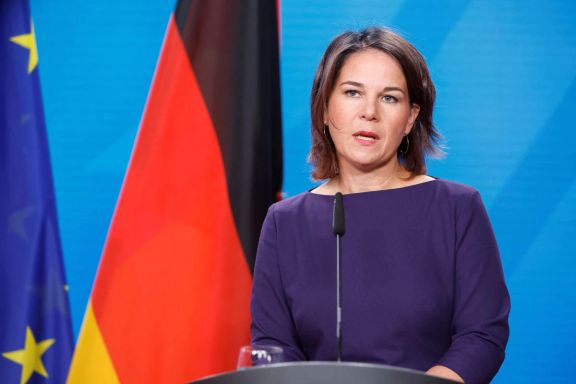
Germany has once again warned the Islamic Republic about issuing death sentences for anti-regime protesters emphasizing that Iranian authorities must be held accountable.
Foreign Minister Annalena Baerbock said Tuesday there is no doubt that the Iranian regime is brutally repressing its own people.
Speaking at the opening of the 8th World Congress Against the Death Penalty in Berlin, Baerbock stated there are reports that Iranian regime has issued the first death sentence against a person who took part in the protests after the death of Mahsa Amini, “who simply wished to live in freedom like many others.”
“The Islamic Republic is threatening many more protestors with the death penalty, underlined the German minister.
On Sunday, a Revolutionary Court in Iran issued the first death penalty against a protester and another court sentenced five others from five to 10 years in jail each.
Baerbock hailed the decision to impose sanctions on Iranian officials on Monday saying the EU sanctions were put in place to target those who are responsible in Tehran.
“We see with great concern how authoritarian regimes use the death penalty to repress political opponents more and more,” she noted.
“They are not carrying out the death penalty for severe crimes such as murder – but they are using it against people simply expressing their feelings such as who they love, people expressing their opinions or celebrating freedom and life, for example with music and dancing,” she underlined.
Iranian security forces have killed at least 340 people including 43 children and 25 women during the ongoing protests.

Reports say the health condition of two detained Iranian activists is deteriorating as the Iranian regime denies proper medical care to them.
Arash Sadeghi, 36, is one of these inmates, whose father on Tuesday warned about his physical condition, saying he was arrested despite suffering from bone cancer and does not have access to medicine and treatment.
In a video published on social media, Hossein Sadeghi also pointed out that “if Arash is not treated for two months, he will not survive.”
“After the start of nationwide protests in Iran, Arash answer my calls, but later on a short call he announced he was arrested and was in ward 209 of Evin Prison which belongs to the intelligence ministry,” added the father.
Reports say Yashar Tahidi, a political prisoner, who was injured by several bullets last month following the disturbances at Evin prison, is denied proper medical care despite his deteriorating physical condition.
According to HRANA News Agency, Yashar is also suffering from “attention deficit disorder” and needs regular medication, but this is not given to him due to shortages.
Yashar Tohidi has been serving his sentence of 2 years and 9 months in Evin prison since June 7, 2022.
The health condition of the well-known political prisoner Hossein Ronaghi is also worsening. His brother Hassan said in a tweet Tuesday that he is in Evin Prison's infirmary on a dry food strike and has not received any treatment yet.